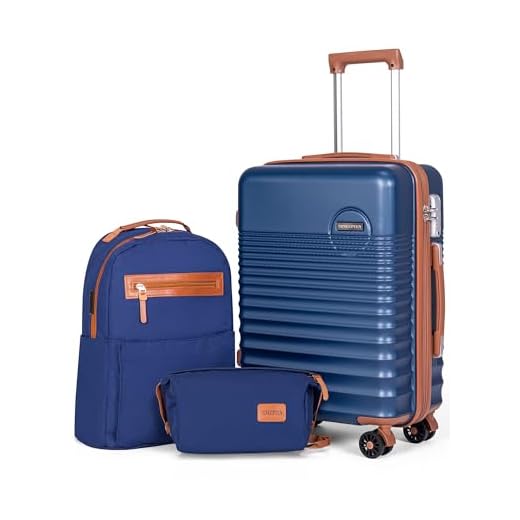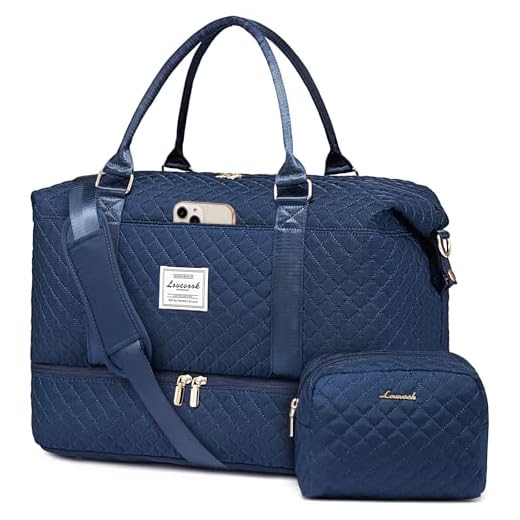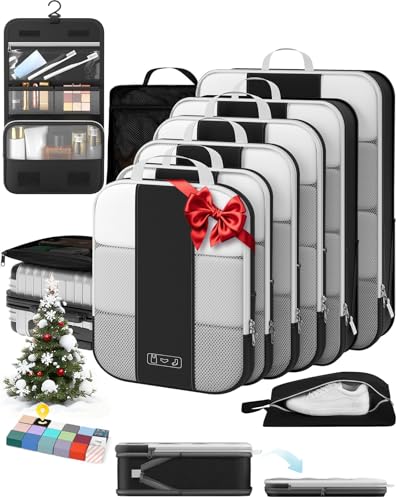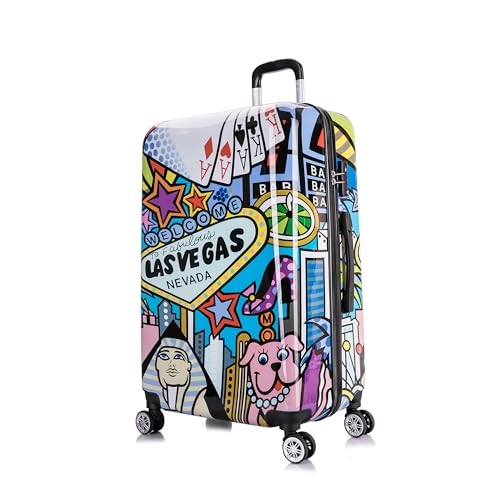





For smooth airport experiences, aim for carry-on sizes not exceeding 22 x 14 x 9 inches (56 x 36 x 23 cm). Most airlines adhere to these guidelines, but double-check specific regulations for your chosen carrier.
Weight restrictions also matter; many airlines limit the weight of cabin baggage to around 15-22 pounds (7-10 kg). Pack wisely to remain within these limits and avoid at-the-gate fees.
To maximize space, consider soft-sided options, allowing for easier storage in overhead compartments. Additionally, investing in a bag with multiple compartments can help with organization and accessibility throughout your travels.
Standard Sizes for Cabin Bags Across Major Airlines
The recommended dimensions for carry-on bags vary by airline, but common standards fall within specific limits. Most carriers allow baggage measuring 55 cm x 40 cm x 20 cm (21.5 in x 15.7 in x 7.9 in) or similar. These measurements ensure compatibility with overhead compartments.
Airlines and Their Policies:
American Airlines: Maximum dimensions are 56 cm x 36 cm x 23 cm (22 in x 14 in x 9 in). Weight limit is typically not enforced, but passengers must handle their own bags.
Delta Airlines: Same dimensions as American Airlines. They also generally do not impose weight restrictions.
British Airways: Permits a bag size not exceeding 56 cm x 45 cm x 25 cm (22 in x 18 in x 10 in), including handles and wheels.
Ryanair: Limit is more stringent, with dimensions of 40 cm x 20 cm x 25 cm (15.7 in x 7.9 in x 9.8 in). Weight must be kept under 10 kg (22 lbs) for priority boarding customers and 0 kg for standard fare.
easyJet: Allows one piece measuring 45 cm x 36 cm x 20 cm (17.7 in x 14.2 in x 7.9 in) with no weight limit, but must fit under the seat in front.
Recommendations:
Always check with your airline before traveling, as regulations can change. Keeping your bag under these measurements can save time at check-in and enhance your flying experience. Consider lightweight materials to maximize the allowed capacity without exceeding limitations.
How to measure your carry-on correctly
Measure height, width, and depth using a soft measuring tape or rigid ruler. Begin with the longest side, typically the height. Extend the tape from the bottom to the highest point of the bag. This includes any wheels or handles protruding from the main body.
Next, measure the width by placing the tape across the widest part, ensuring it remains straight for accuracy. Finally, capture the depth by measuring from the front to the back. This helps avoid any surprises when fitting into airline guidelines.
It’s advisable to check dimensions of all compartments if your bag has pockets or expandability features, as these can affect overall sizing. Don’t overlook excess items that may make the bag bulkier when packed.
Conduct a test by placing the assembled bag in a carry-on sizing frame at the airport, if available. This can provide a real-world sizing check before travel.
Lastly, always refer to specific airline rules before flying. Each carrier may have unique restrictions that need to be followed closely to avoid additional fees.
Tips for maximizing space within hand luggage limits
Choose a lightweight bag with multiple compartments. This design allows you to organize items efficiently, making it easier to utilize every inch. Consider investing in a best cheap backpack that fits your airline’s requirements while providing ample storage options.
Roll clothes instead of folding them to save space and reduce wrinkles. Use packing cubes to keep items compressed and organized, making it simpler to find what you need quickly.
Wear your bulkiest items, such as jackets or heavy shoes, to free up space. Plan outfits around versatile pieces that can easily mix and match, allowing for reduced clothing requirements.
Prioritize essential toiletries in travel-sized containers; utilize clear plastic bags to keep contents organized and accessible. Minimize electronics by bringing only necessary devices, ensuring chargers and other accessories are compact.
Consider multi-functional items, such as a scarf that can serve as a blanket or a bag that converts into a travel pillow. Use available pockets and hidden compartments in your backpack to stow smaller items, maximizing all available areas.
Finally, review airline restrictions closely to avoid unnecessary penalties. Knowing allowed sizes and weights helps you pack more effectively while ensuring a smooth travel experience.
For cleaning and maintenance tips related to travel gear, check out the best pressure washer soap for windows.
Common Mistakes to Avoid with Luggage Size Regulations
Always check the specific size restrictions of your airline before packing. Many travelers assume that one size fits all, leading to unexpected fees or having to check their bags last minute.
- Neglecting to weigh your bag can result in surprises at the airport. Invest in a portable scale to ensure compliance with weight guidelines.
- Using oversized cases without realizing it can cause delays. Measure dimensions precisely, including wheels and handles.
- Ignoring the allowance for additional personal items can be costly. Familiarize yourself with what qualifies as a personal item to take advantage of the extra space.
- Forgetting to account for the bag’s shape and design can be problematic. A stylish design that looks good might not fit the size requirements, so choose wisely.
Consider options that balance style and practicality, like a best stylish travel duffel bag, ensuring a great fit while looking sharp.
- Procrastinating until packing day increases the risk of mistakes. Prepare in advance to avoid last-minute packing errors.
- Believing every airline has the same policies leads to disappointment. Each airline has variations; consult their websites for precise information.
Keep these pitfalls in mind to streamline your travel experience and ensure a smoother boarding process without unnecessary hassles.







